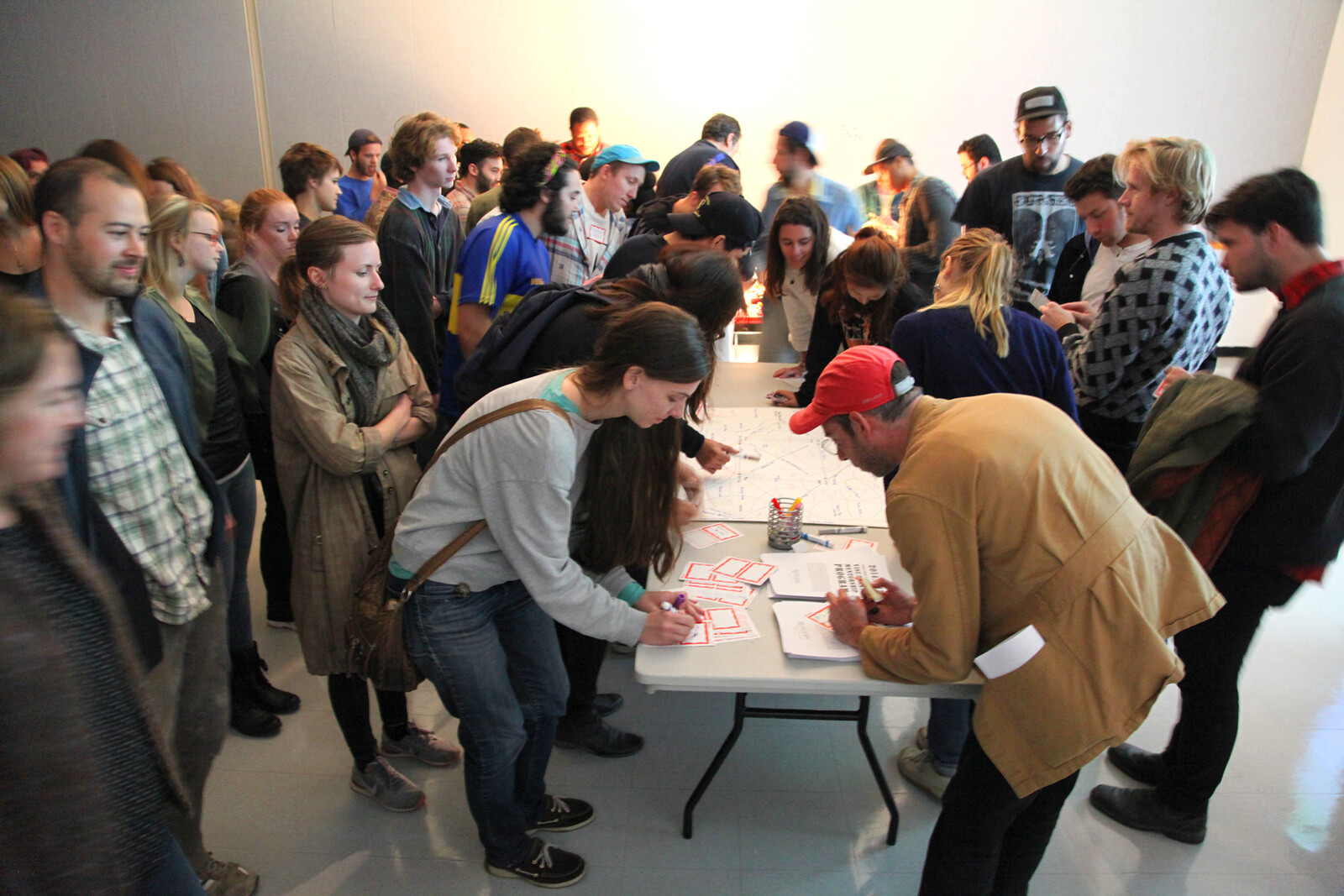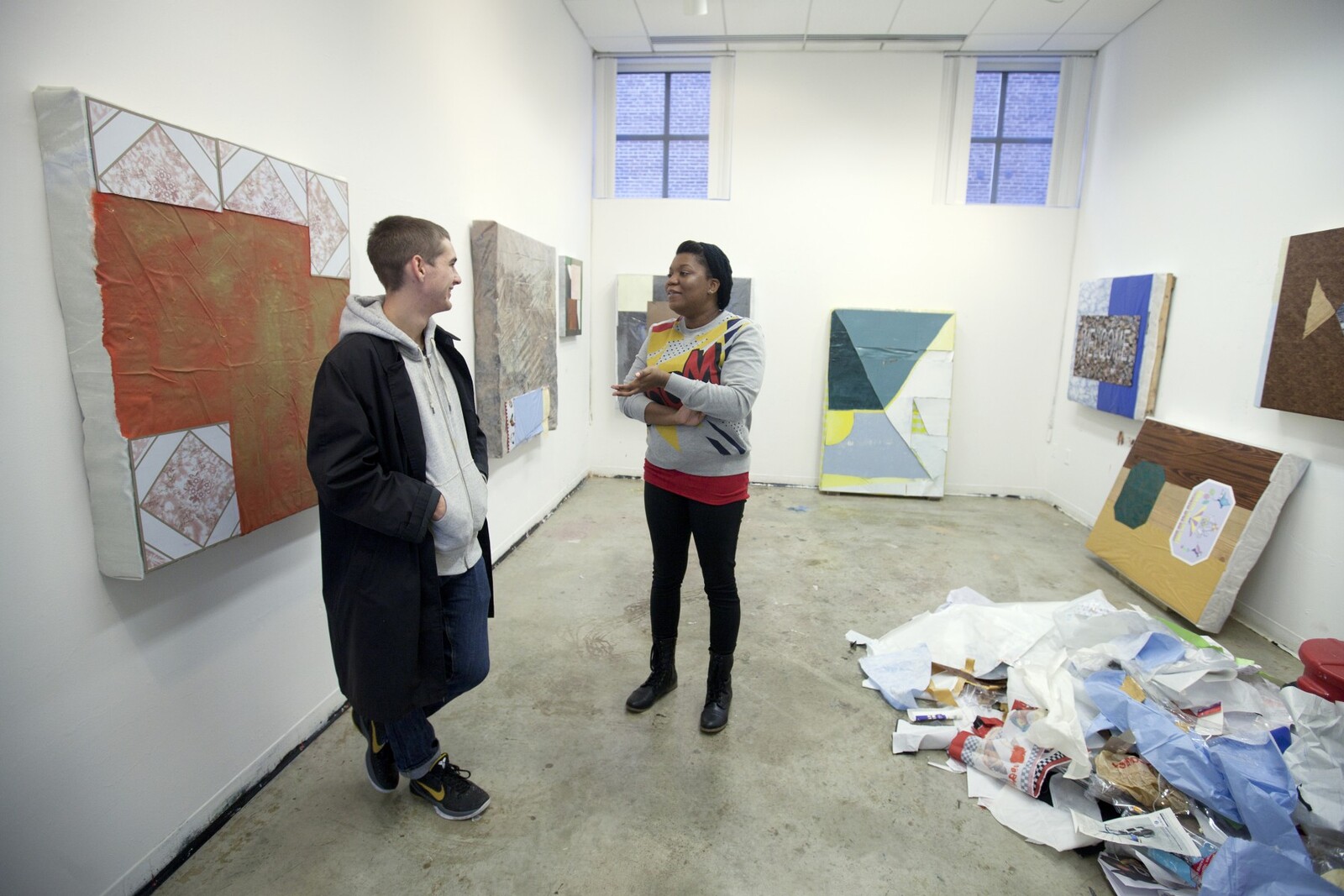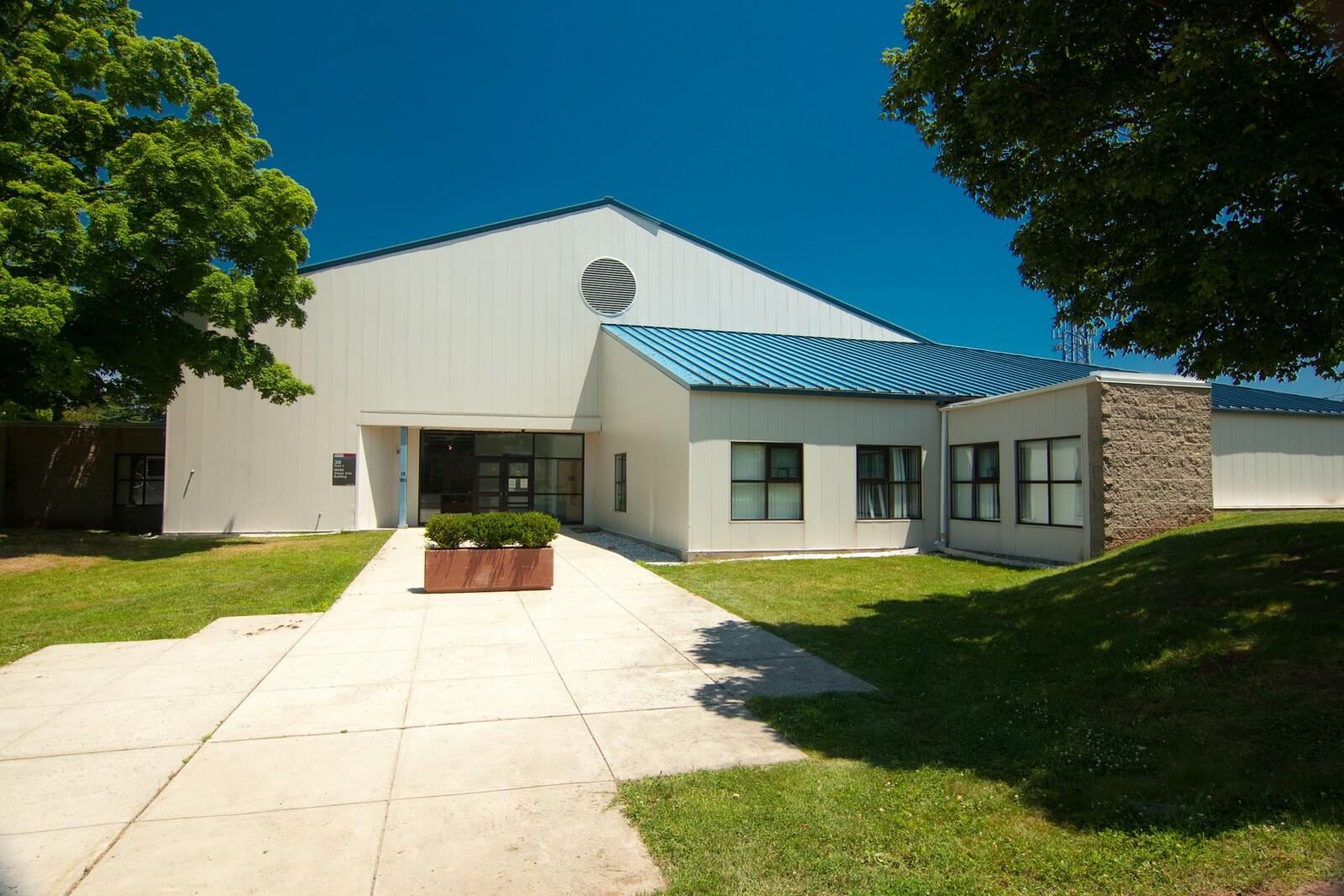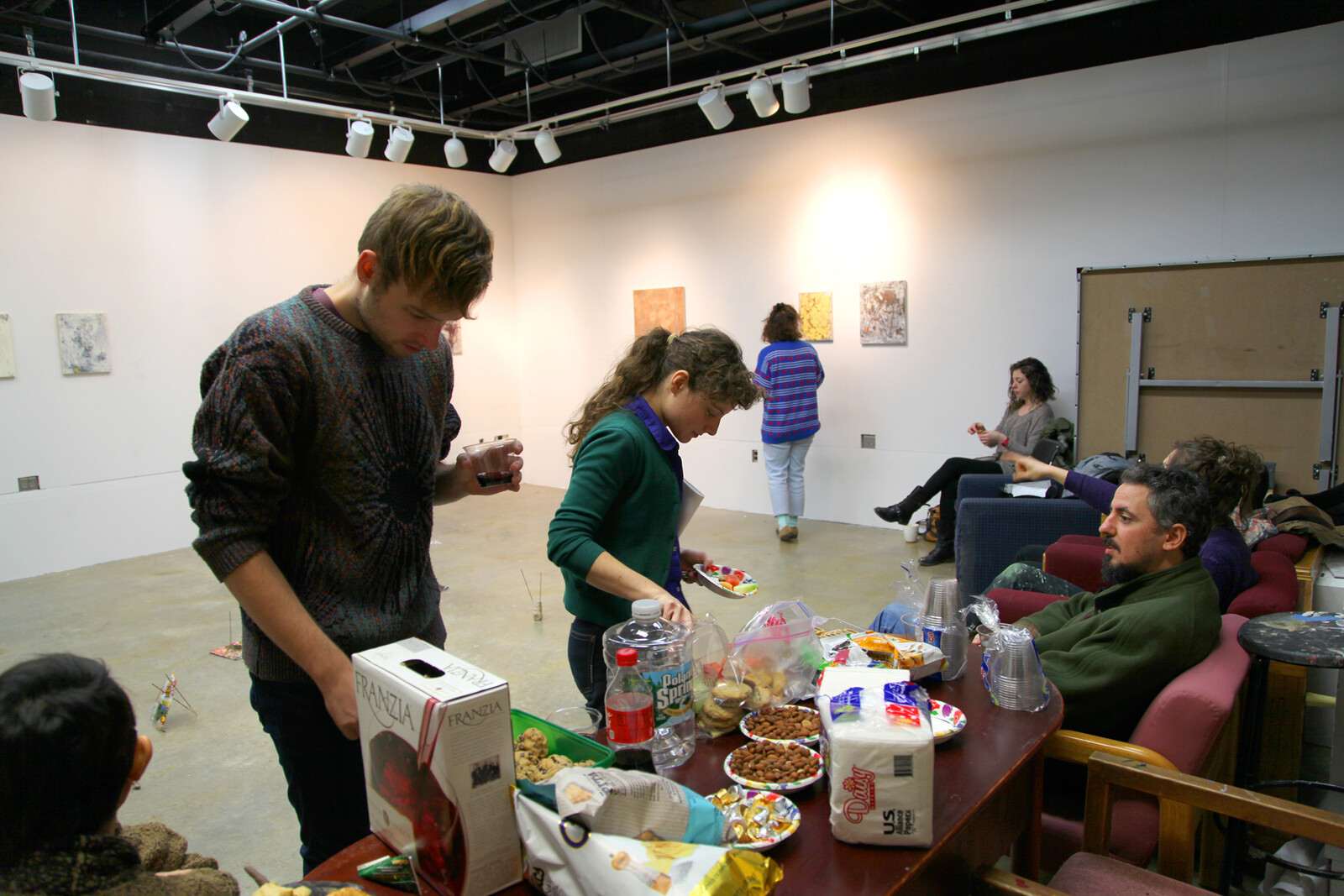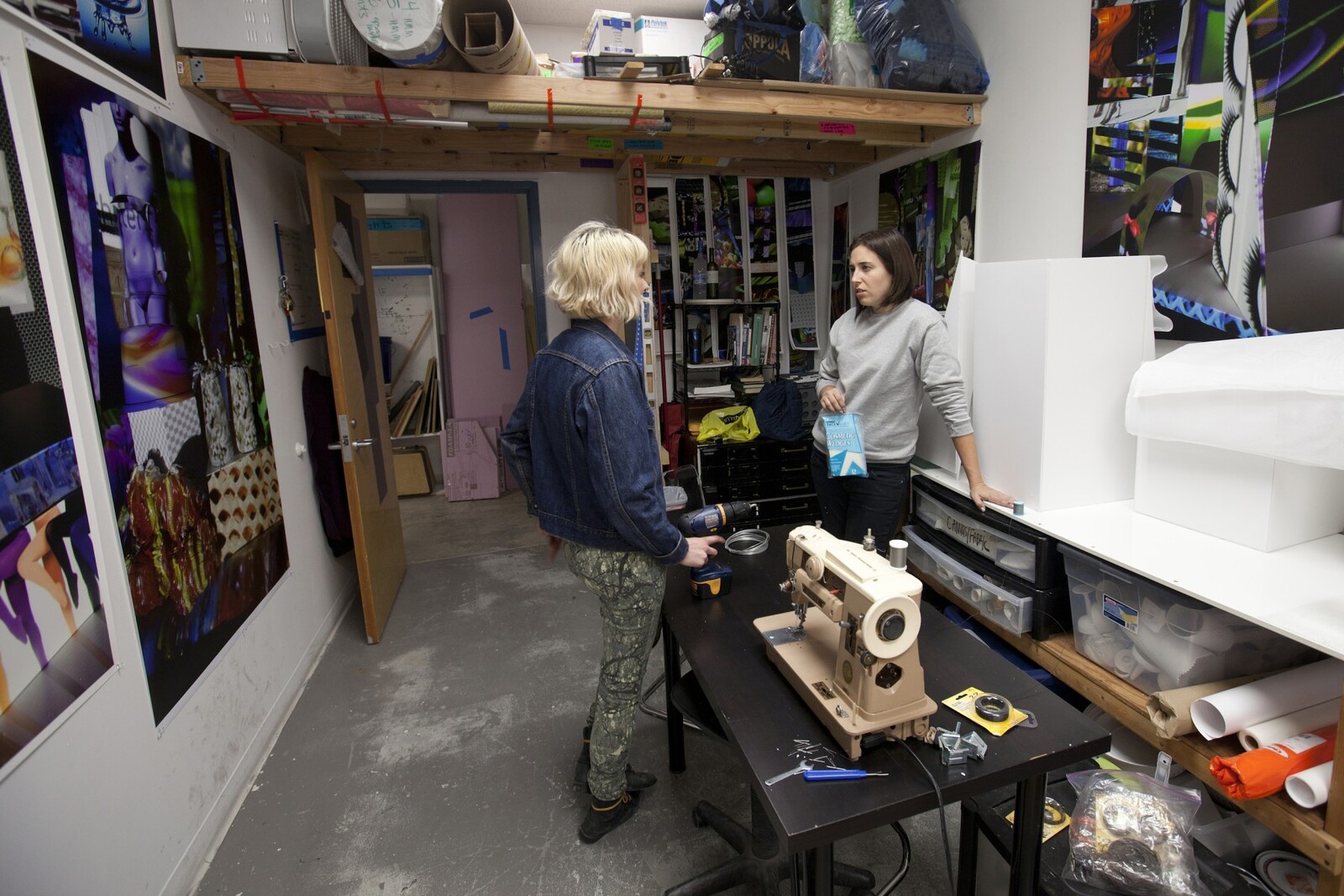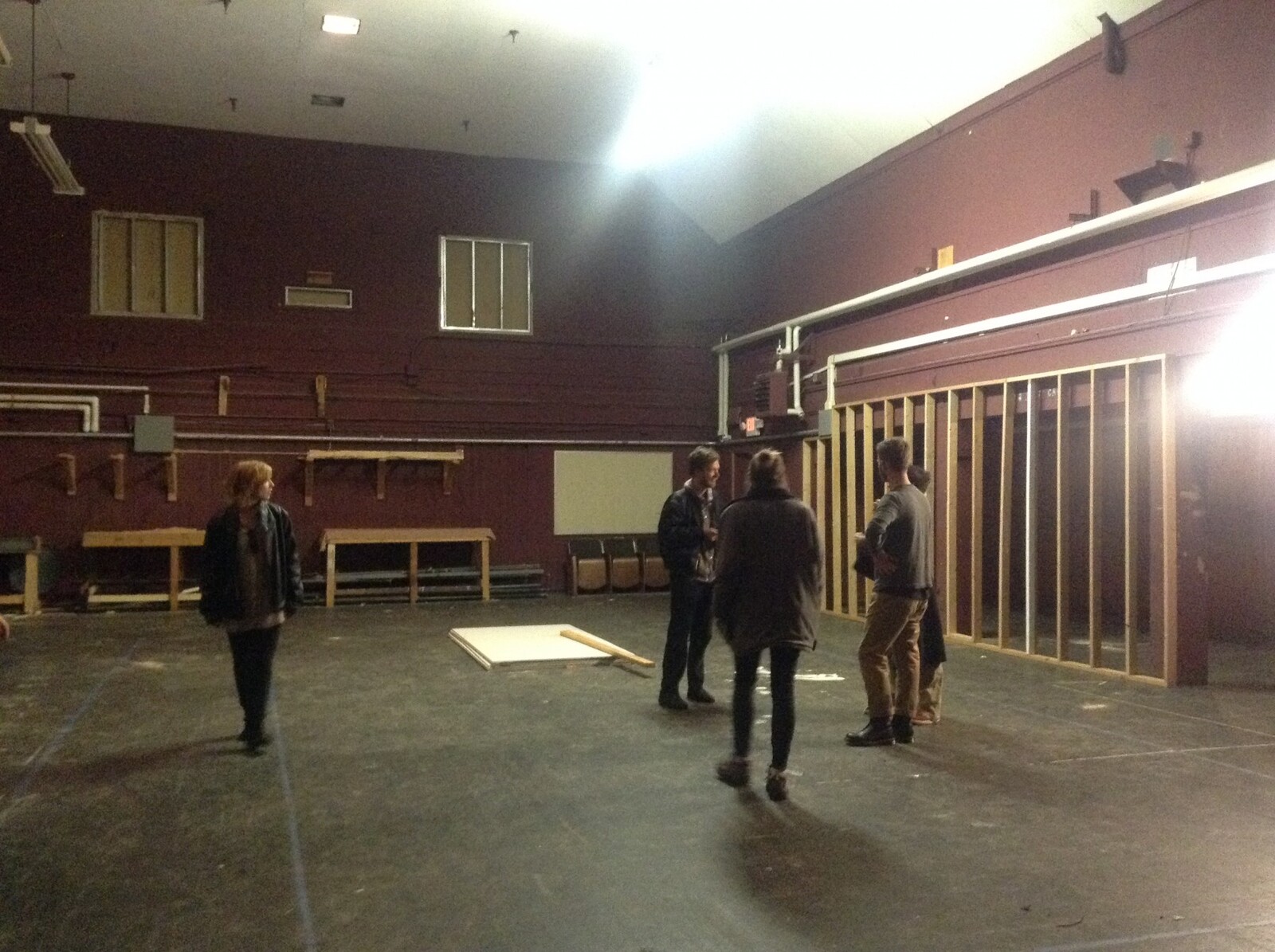Having finished undergrad with a bill totaling over one hundred thousand dollars at the dawn of the financial crisis, I’ve been desperately and embarrassingly broke since 2008. I’ve worked dead-end retail jobs, ridden out unemployment, and moved back in with my parents during art world off-seasons just to be an art critic. Was it worth it? I can’t really say yes, but I acknowledge it was my decision to dig in my heels and pursue a chronically underfunded profession despite all logic and parental advice. Feeling that you’re born an artist or writer is what keeps these industries going, because logically 99% of us are setting ourselves up for failure and financial ruin—but hey, I’m a creative type, so, YOLO—I went to art school.
I approached the task of reporting on an MFA program not based on which MFA program is the best, with the most star-studded faculty and facilities, etc., but rather which program adequately prepares its students for the cliff jump that is being a creative professional in a big city. Believe it or not, there’s an affordable MFA program with a devoted faculty that I found while giving grad crits a few years ago—and it sure isn’t in New Haven. It’s Rutgers, in New Brunswick, New Jersey. At this point, the Rutgers MFA program is about half fully funded with tuition remission, teaching opportunities, and stipends for MFA students. It has a pretty solid, growing faculty, and some students even walk out with money saved.
Rutgers isn’t known as the most glamorous MFA program (cough, New Jersey, cough), but it is known for its proximity to New York. “I think being 40 minutes outside of NYC makes all the difference,” notes painting professor Hanneline Rogeberg to me in a recent email. “Rather than make you hurry up and congeal into a ‘thesis’ a response to what’s going on there, Rutgers provides enough of a reprieve—the large studios don’t hurt—to keep the important questions alive longer while letting you keep a finger in the stew.” And in the stew you shall stay. Like many young artists, recent graduates tend to drift toward Brooklyn, and a handful co-direct the Williamsburg gallery Soloway. The combination of affordability, great faculty, and close-but-not-too-close proximity to New York’s thriving cultural offerings and related distractions allow for a less resource-draining—but no less substantial—MFA experience.
The Mason Gross School of Art campus is situated in New Brunswick, New Jersey, and is part of Rutgers University, the country’s oldest land-grant institution, founded in 1766. (It’s amazing to think that Rutgers was around a full ten years before American independence. From 1766–1825 it was known as “Queens College,” but was then renamed after Colonel Henry Rutgers donated a hefty sum to the school.) The entire university currently enrolls 65,000 students and employs more than 9,000 full- and part-time faculty. The Mason Gross School of the Arts was founded in 1976 as the arts conservatory of Rutgers, and offers degree programs in dance, digital film, music, theater, and visual arts. The Visual Arts MFA program was founded in 1962, notably before many other MFA programs, which were popularized in the 1970s. Art historically, Rutgers is famous for being host to the budding Fluxus movement in the mid-twentieth century.
Fluxists Allan Kaprow, in the late 1950s and early 1960s, and Robert Watts, from 1979–1984, both taught here; and the first Happening took place in New Brunswick in spring 1957. Later, influential feminist artist Martha Rosler taught at Rutgers from the 1980s through the aughts, and painter Thomas Nozkowski joined the faculty in 2000. Vague stories from faculty suggest that an old-guard versus new-guard generational clash between combative faculty plagued the school during and perhaps predating the graduate directorship of Ardele Lister from fall 2008 through fall 2010. This has seemingly changed since painter and pedagogue Stephen Westfall took the graduate director helm in 2011, after teaching for twenty years at The School of Visual Arts and sixteen years at the Milton Avery School of Arts at Bard College. It seems as if his tenure, likely combined with a crappy economy, has made the school a more competitive and selective program. “We used to accept approximately 40 applicants to get 20 enrolled, and now we’re admitting between 20–25 applicants to get 16–20 enrolled,” says Westfall. Rutgers’ other numbers are astoundingly good. “A little less than half of the student body gets teaching assistantships. We get eight or nine TAships out of seventeen. That gives full tuition remission, health benefits eligibility, and a stipend,” says the graduate director. Though it’s obvious these scholarships make Rutgers a no-brainer choice, Westfall assures me that tuition for the remaining students is low and that the faculty do everything they can to lessen their future debt burden. “For those that do pay tuition, it’s about $27,000 per year out-of-state, $18,000 in-state. We try everything we can do to ameliorate that with scholarships, TAships, and part-time lectureships. Ethically, we can not countenance saddling our students with outrageous student loan debt,” says Westfall.
Being located in a major university has its benefits. For one, the institutional support and funding is a boon to any program. Secondly, if you’ve gone to a private art school, you know that making art in such an environment can sometimes feel limiting and too sheltered, as students only have other budding artists as peers. Westfall claims that the proximity to the university’s other schools, such as the business or medical programs, is felt: “Rutgers students learn to make art in a worldly context […] the MFA programs here are taught with a humanitarianism endemic to humanities programs.” And yet, while situated in a broader university context, the visual arts MFA is also exceedingly small and nurturing—so small that by graduation time, every student has a meaningful interaction with every faculty member.
Due to the retirement of several faculty, such as Emma Amos, Gary Kuehn, Toby MacLennan, and Thomas Nozkowski (who is no longer full-time but remains active in the program as a critic), there were eight new faculty hires in the MFA program. These include painter Julie Langsam, sculptor Patrick Strzelec, photographers Gary Schneider and Miranda Lichtenstein, interactive media artist Atif Akin, painter Marc Handelman, performance artist Aki Sasamoto, and media artist Natalie Bookchin. (And, it has now been confirmed—though yet to be announced—that eminent visual artist Kara Walker will be joining the team, a development that will surely add to the program’s changing shape.) “The first thing that I always tell people about Mason Gross is that the faculty and staff are beyond supportive,” says first-year student Mitch Speed. During my visit, it quickly became apparent how special the faculty is—particularly, the painter Marc Handelman.
Handelman is on sabbatical this semester, and as such let every interested student enroll in his seminar last semester—and it was a large number of students, seemingly the entire MFA program. You can tell why Handelman is so popular. He’s incredibly open, curious, and humble, with an approachable dash of humility. He also maintains a successful career as an artist, represented by Sikkema Jenkins. During my visit to Rutgers, Handelman’s class was the last of the day. It just so happened that the two classes I visited were in the same cell-like classroom. (Most classes are spread across different New Brunswick locations, meaning you have to drive everywhere, which can be limiting.) So I had been mostly sitting at a large conference table in the same medium-sized, fluorescent-lit, windowless cinderblock room all day. After a break, I came back for Handelman’s class, and the room had been transformed with lamps and strings of Christmas lights. Handelman refashioned the prison-like conference room into an ambient environment conducive to learning. The class gave presentations on a couple chapters of Hyperobjects by Rice University English professor Timothy Morton. Hyperobjects is an extremely complicated tome that even the most well-read artists and curators would have trouble parsing, yet Handelman and his students dove in with no reservations, albeit a bit of confusion. The student presentations were informed and even creative, as two first-year grads made a rather funny PowerPoint presentation outlining the book, replete with illustrations.
When I sent around an email asking students for comment on their MFA experience, they gave mostly rave reviews of the faculty. “So far the experience has opened up my practice immensely,” says first-year Brian Edgerton. “Both teachers and fellow students are sensitive and ambitious (as opposed to dogmatic or overly competitive). There is a generally friendly and supportive vibe here, which was apparent from the open studios and that played a large role in my applying,” says Edgerton. First-year student Spencer Erikson had a mostly positive review, saying, “The younger faculty (Marc Handelman and Aki Sasamoto) are bringing a much-needed breath of a fresh air into the program, which the whole grad body is very thankful for, as the older faculty can at times appear to be out of touch.” If you’ve ever been an art student, you know how true this statement is. While of course there are many veteran teachers who remain indefatigable, teaching young, privileged kids the stuff of artistic practice can be akin to herding cats, and is prone to burn-out.
For some, Rutgers’ facilities are a big draw. “At Rutgers every MFA candidate receives from enrollment a private, large studio space that is available even through the summer breaks,” says Rachel MacFarlane, a first-year student. “The program is interdisciplinary, allowing all students to explore different media. No matter what discipline you come in specializing in, you have all the faculty and department facilities available to you. This was another huge draw for me because I came from a very specialized undergraduate degree. Here I can explore new avenues with the support needed to make my experiments successful.” Other comparable programs, such as the MFAs at Hunter College, New York University, or Virginia Commonwealth University, have smaller, shared, or semi-private studios that are not always accessible year-round.
Other students appreciate the teaching experience, whether they’re ready for it or not. “The other important aspect of Mason Gross is the emphasis it places on teaching—almost all grad students are teaching to some degree and you are thrown into it immediately,” says first-year Brian Edgerton. “This was a shock for me and I was terrified of doing my students wrong at first. Pretty quickly, it became apparent that I had something to share with them, and I think it’s useful for undergrads to have closer contact with grad students than I had as an undergrad. I think it gives them a realistic picture of what their more immediate future can look like and I found myself dispensing a lot of life advice that I think they felt comfortable asking because of the smaller age and experience gap.”
Rutgers seems unique in that it gives its students a certifiable skill—well, beyond artistry—when they graduate. To be fair, teaching jobs are not easy to come by, and upon graduating any MFA program, even with teaching experience, an artist would be hard-pressed to swing a university teaching job—especially if they move to a new city. If you graduate from a school in San Francisco or Richmond, Virginia, what good are your accomplishments in another city if your professional network doesn’t extend there? I know that after I worked for an art historian and museum in Chicago, no one really cared in New York. “Students can’t expect to get a job the first year after they graduate even if they do have teaching experience,” says Westfall. “After I graduated from college, I worked as a proofreader for five years, even though I’m dyslexic, and maintained an artist community and then started getting jobs. I had a couple of times in my life that I stopped and found a ceiling and said, ‘If this is as far as it goes, it’s worth it.’ But I could only say that because I didn’t’ have 130k worth of debt. And there was still a time that I was lighting Santeria candles with my forehead to the floor praying about how I was going to pay next month’s rent.”
Speaking of money, the struggle is real. Since I graduated undergrad in 2008, 2015 will likely be the first year I live in New York and earn more than I spend. Given that this is the case with most of my late-twenties friends and colleagues, it seems all the more important to look at cost-effective alternatives to the more prestigious Ivy League schools. Rutgers, for one, has a longstanding tradition of providing education to the working class—but how does this work in an art setting, where the appearance of exclusivity is a currency in itself? Judging by Rutgers’s new hires, it seems there’s a way to develop some of the same name recognition that usually fuels pricier MFA programs.
“Some of our students come out with debt and some don’t. They might come out with $15,000, but not $80,000 or $125,000 worth of debt,” says Westfall. “And where is all of that money going? It’s not going to student Pell Grants, it’s not going to supporting infrastructure or faculty. Rutgers right now is a beacon on a very stormy night. But it’s not very clear how long this is going to last.”
For now, what remains clear amid our current economic climate, with out-of-control tuition prices, is that Rutgers is a safe bet.
—Karen Archey
——————
Letter to the Editor
April 22, 2015
Thank you for Karen Archey’s very positive and thoughtful piece on our program. I do want to clear up one possible misreading that some might come away with. The internal dissensions among our gifted and fractious faculty during the aughts are well known and we make no pretense of covering them up. But no one, to my knowledge, was pointing any fingers at Ardele Lister (who was Graduate Director from 2008 through 2010), and the infighting had nothing to do with problems from within the grad program. It is regrettable that she might be associated with it at all.
Sincerely,
Stephen Westfall
Graduate Director, Visual Arts
Mason Gross School of the Arts
Rutgers University
